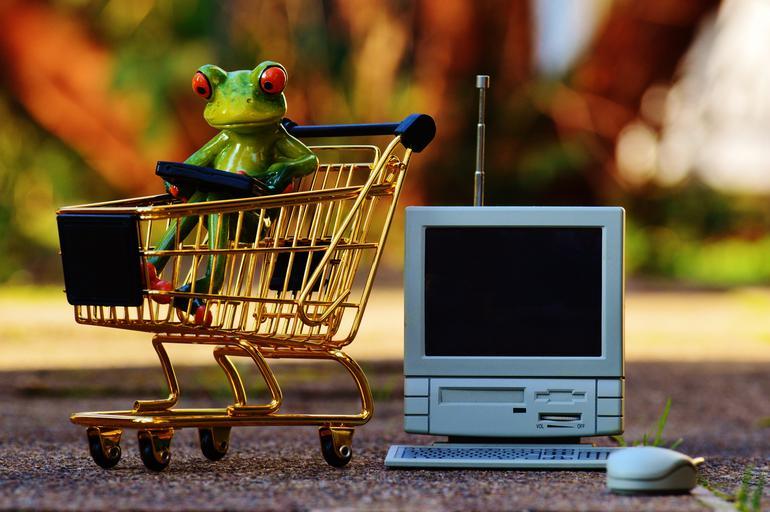
As an online shop owner, you know that high return on investment (ROI) is your Holy Grail. Yet, sadly, far too many e-commerce websites fall drastically short of expectations.
When you consider that 54% of visitors still abandon their carts with regularity, and 90% of them are not even prepared to buy right away, clearly something more is needed. Exactly what may be needed is for B2C e-commerce marketers to figure out.
To combat elevated levels of cart abandonment and wishy-washy customers, it helps to have an optimized landing page.
What is a Landing Page?
A landing page is nothing more than a web page. However, the term indicates a page where visitors land after taking a specific action, such as clicking an ad or making a purchase. No matter how visitors find your landing page, each element must be optimized for conversions.
Simple in Design
To optimize your website for maximum conversions, think minimalistic, when it comes to color and site structure. After all, you only have a few seconds to convince online shoppers that they should buy your merchandise. And, as you’ve probably figured out already, fancy designs and the latest bells and whistles won’t persuade today’s finicky e-commerce buyer.
Here’s how to minimalize your site
Single Focus
Landing pages are different than, say, product pages. A product page is designed to provide general product information to a mass audience and has several areas of focus.
A landing page, on the other hand, is designed for one person – the buyer persona – and is designed for a single action, be it a purchase, subscription, or download.
That also means that only truly optimized landing pages can move customers’ needles enough to sway them to choose their delivery option and check out.
The Difference with E-Commerce Landing Pages
E-commerce sellers rely on landing pages, since landing pages have been shown to be better for B2C conversions than product pages. In fact, studies show that pages with multiple offers get 266% fewer leads than ones with single offers.
To put it simply, landing pages are straightforward, and that’s precisely what e-buyers crave. No one is going to spend time figuring out how to navigate your complicated site. They want easy, and optimized landing pages. Give your buyers exactly that – ease of use.
After all, a proper landing page will only give visitors two options: Convert or leave. Preferably, you’ve done your job so well that more will choose to stick around than bounce.
How to Optimize Your E-Commerce Landing Pages in 6 Easy Steps
To earn more conversions and lower your landing pages’ bounce rates, while simultaneously reducing cart abandonment and boosting ROI, consider putting these six steps into action.
1. Craft Compelling Copy
The first thing your landing page visitors will see, aside from any imagery, is your headline. Therefore, your headline must speak to the reader and be as engaging as possible.
If you’re not a wordsmith, not to worry, as CoSchedule has created a handy Headline Analyzer to help you create headlines that convert.
The tool can be used for ads, articles, blogs, and books, but especially for landing pages, where it’s more important than ever to evoke the proper visitor emotions.
A few best practices to keep in mind include:
- Do not allow your headline to exceed 10 words. Ideally, headlines with 6 to 7 words and about 55 characters tend to earn a higher number of click-throughs.
- Use keywords in your headline so that readers know that your piece is targeted for them. For instance, the headline “Data Analysis Tips for Picky Programming Managers” makes it quite clear as to which buyer persona this article is intended for.
- Give a promise or a reason for readers to follow through and continue reading, such as: Cyber Security Secrets for Keeping Hackers at Bay” gives this article’s clear intentions right in the headline.
When you’ve decided on the right words, submit your headline into CoSchedule’s analyzer to receive a full report. The tool works by breaking your headline down into four basic elements: Common words, uncommon words, powerful words, and emotional words.
The report also includes a headline score and tips for optimizing your headline even further.
Subheadings
Most people skim content online, that’s just a fact that everyone accepts. You can keep these skimmers’ attention by using subheadings as stepping stones they can follow to your CTA. Ideally, your subheaders will describe your offer in further detail without forcing readers to read too deeply.
For instance, your subheaders might read, “Takes Up Less Space,” and then the paragraph underneath might describe why that’s the case. The next subheading, “Requires Less Energy,” will go on to explain that point, and so on.
Studies show that you only have 8 seconds to convince visitors with your headings, so make them count. The fewer words the better, as long as they are purposeful and relevant.
Other Conversion Elements
Once your headline and subheadings are in order, give your landing page a professional polish by spending time crafting quality product descriptions. Pair your descriptions with attractive imagery, and infuse your page with product reviews, shipping cost information, and delivery time estimates.
Product Descriptions
When writing the words to describe your products, consider using power words like “Long-Lasting” and active voice, such as “This cybersecurity software is used by millions to keep hackers at bay.”
If your products require product descriptions that you consider to be overly wordy or technical, consider presenting buyers with a video landing page.
To help you maintain product descriptions that contain all the essential information buyers need, and ones that align with your inventory, there are a few inventory management tools you can use, like Shopify inventory management apps and SkuVaults.
2. Optimize Your Call to Action (CTA)
Your landing page could be fully optimized, but if you don’t have an enticing CTA, your efforts could go to waste.
A landing page has one goal, as we’ve established, to convert web visitors into buyers. That’s where your CTA comes in. Your CTA could come as a headline that reads “Leave your information below to receive our newsletter,” or it could come in the form of a button that reads, “Buy Now!”
CTA Buttons
When it comes to CTA buttons, keep them simple. Results from Midas Media showed that buttons with simpler designs and between two and four words get the most clicks.
In other words, skip the design frills, don’t get too creative, and use short (and understandable) statements, such as “Learn More!”
As an added tip, consider using first-person speech instead of second, or “I” and “Me” instead of “You” and “Your.” Changing your CTA point of view from second to first-person can increase clicks by 90%.
Your best bet is to test various CTA POVs to see what works best with your audience. For instance, you may want to try “Get your free gift” as well as “Yes, send me the free gift,” to determine which one performs better.
While you’re at it, be smart about your CTA button size, which should be big enough to stand out but not so big that it distracts visitors from the action at hand.
You’ll also want to consider button placement. Most people read a web page from the upper left to the lower right, so it would make more sense to place your CTA button on the lower right-hand side.
3. Add Trust Signals
Trust signs and badges can increase conversions by 40%, and social proof from well-known brands can automatically build a higher level of trust and confidence with B2C buyers.
A trust badge is an endorsement by a top brand, such as one of your product partners. Visitors who already trust these brands and influencers would be more likely to give your products the benefit of the doubt.
The trust sign could also come in the form of testimonials by loyal and repeat customers. When it comes to testimonials, provide as much concrete detail about the person as possible, such as their name, job role, company they work for, and full statement. For added effect, contact the person to acquire a photo or video you can use to accompany the rave review.
When it comes to landing pages, these trust signs can help you establish a connection between your products and potential buyers.
If you haven’t had dealings with top brands and you’re too new on the scene to secure testimonials, trust signs can come from SLL certificate providers, payment providers, hosting companies, or you can create your own. In the UK, 85% of online shoppers actively search for trust badges as an assurance that it’s safe to make a purchase.
4. Limit Form Fields
In some instances, you may require visitors to fill out a form to access the product they desire. When creating forms, make them as simple as possible.
Too many fields can make your form seem overly-invasive, and most will bounce rather than commit.
It’s been shown that reducing the number of form fields to 10 or less can improve conversions by 120%. Not only that but reducing forms to four fields or less can boost conversions by 160%!
In other words, don’t ask for any more information than is necessary to secure the conversion. If a name and email is all you need, then leave it at that and you may see your conversions soar.
This advice is counter-intuitive for e-commerce sellers who wish to segment their audiences. The more information you have, the more segments you can create, after all. This is another aspect you’ll want to A/B test to determine if more or fewer form fields are the right fit for your target market.
Pre-Selected Forms
What if you could present visitors with forms that were already completed? That reality is here, as Wishpond allows you to use pre-selected forms using a simple line of code. The forms make the checkout process seamless for buyers and are said to increase signups by up to 56%!
5. Entice Landing Page Sharing
If buyers are willing to spend their money on your products, chances are they’ll also be willing to share your content online.
Adding social shares to your landing pages provides you with a ready-made crowd of marketers, and all for free. Every prospect is a potential customer, this can lead to viral growth.
Start by customizing the social links yourself. Create a hyperlink for each social media platform you want to use, such as “Share Us on Facebook.” Doing so affords you the chance to set up the language around your offer. Another example might be a Twitter link for your bookstore that reads, “Tweet This Book.”
Using a Twitter hyperlink will be a bit different from other social platforms, as you will have to feed your visitors with the exact tweet you want displayed. To make this a simple affair, use the clicktotweet to site, which allows you to craft tweets and hyperlinks for easy sharing, such as “Tweet This: Social sharing increases conversions significantly.”
Alternatively, you can use the official social icons of the various sites in question, as consumers tend to identify better with icons of brands they are familiar with.
If you opt for icons, you can still hyperlink the preferred text as in the case above, but you can dress your links up with these free social media icons.
6. Optimize Your Thank-You Page
After your visitors have opted for your offer, make sure the next page they see says, “Thank You.”
Include the title of your offer as the title of the Thank You page to eliminate confusion. As an added touch, reintroduce the navigation and other elements of your site that you stripped when you created your landing page. Remember, a landing page only has two options: commit or leave. Your Thank You page, on the other hand, is an invitation to continue to browse, learn more, and most importantly, shop.
Test Your E-Commerce Pages
Load Speed
After you are satisfied with your landing page’s optimization, you’ll want to test how fast the page loads. 47% of online consumers expect a page to load within two seconds, at the very most. After three seconds, nearly half of all visitors will abandon the web page entirely.
To test your site’s load speed, use Google’s PageSpeed Insights. The subsequent report will let you determine how fast your page loads while offering one or more tips to speeding things up.
A/B Testing
A/B testing landing pages means creating different versions of your landing page for a specific product, then promoting them to equal-sized audiences at the same time.
Proper A/B testing will place you ahead of the competition, since only 40% of marketers use this technique for landing page optimization.
Start by creating two versions of the same landing page. On one of the pages, change a single element, such as the headline or background color. Then, see which page performs better.
You can also switch up your calls-to-action, CTA placement, and you can format your copy differently, such as using paragraphs as opposed to bullets for critical information.
With enough data, you’ll be able to determine which combination of elements performs best, for your audience. You can then double down on the higher performing variables to build a super landing page that always hits its mark.
Wrapping It Up
You now have a solid strategy for optimizing your e-commerce landing pages for maximum conversions and higher ROI.
As a recap, be mindful of the following key performance indicators (KPIs).
- Optimize your headlines, subheadings, and product descriptions.
- Create clear and actionable CTA buttons.
- Add trust signals to boost your brand’s trust and credibility.
- Add social links and share buttons to leverage prospects for marketing.
- Optimize your thank-you page to present CTAs for social shares and additional offers.
- Test your landing pages with A/B testing and double down on higher performing variables.
Now it’s time to act. Start optimizing your e-commerce landing pages to make your e-store irresistible for your target buyers.



.png)